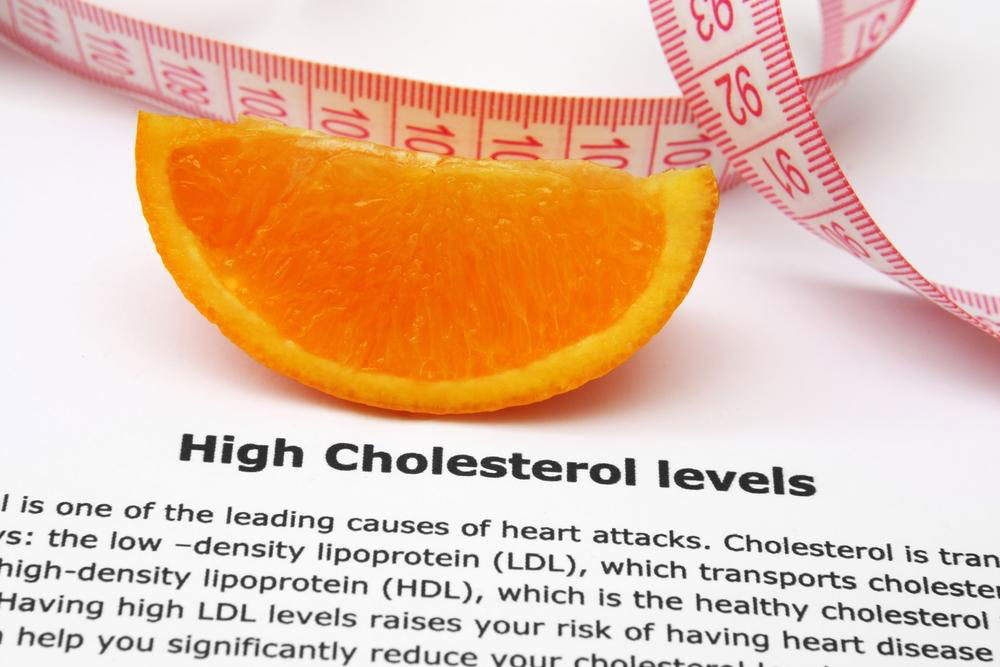Effective Dietary and Lifestyle Approaches to Manage Triglyceride Levels
Learn effective strategies to control triglyceride levels through diet and lifestyle modifications. Discover which foods to limit and incorporate, understand the impact of sugars, alcohol, and unhealthy fats, and explore holistic approaches to reduce cardiovascular risk and promote overall health. This comprehensive guide empowers you to take charge of your lipid health and prevent related diseases effectively.

Effective Dietary and Lifestyle Approaches to Manage Triglyceride Levels
Triglycerides, a type of fat present in our bloodstream, play a vital role in providing quick energy when stored in fat cells. These fats come from the food we eat and are stored in various parts of the body for future energy needs. While they are essential for normal bodily functions, having excessively high triglyceride levels can pose significant health risks, including increased chances of cardiovascular diseases, strokes, and even type 2 diabetes. Therefore, understanding how to control and maintain healthy triglyceride levels is crucial for maintaining overall health and preventing serious health conditions.
Understanding Triglycerides and Their Impact on Health
Triglycerides are fats that circulate in your bloodstream. When you consume food, especially high-calorie, carb-rich, or fatty foods, your body converts excess calories into triglycerides, which are then stored in fat tissues. In normal quantities, triglycerides serve as an energy reservoir. However, elevated levels—known as hypertriglyceridemia—can cause thickening of arterial walls, leading to a higher risk of cardiovascular complications. Elevated triglycerides often accompany other metabolic issues such as obesity, high blood pressure, and insulin resistance, forming part of the metabolic syndrome complex.
Maintaining balanced triglyceride levels is therefore crucial for safeguarding your heart health, reducing risks of stroke, and even protecting your pancreatic health, as extremely high triglycerides can also lead to pancreatitis—a painful inflammation of the pancreas. Understanding how various foods and lifestyle habits influence triglyceride levels empowers you to make healthier choices that promote long-term wellness.
Foods That Contribute to Elevated Triglyceride Levels
Diet plays a dominant role in influencing serum triglyceride levels. Certain foods, particularly those rich in refined carbohydrates, unhealthy fats, and excess sugars, are known to cause spikes in triglycerides. Recognizing and limiting these foods can significantly help in managing triglyceride levels effectively.
Some common dietary culprits include:
Lima beans
Corn
Peas
Sweet potatoes
Dried beans
Winter squash
Water chestnuts
Plantains
While these foods are nutritious in moderation, their high carbohydrate content can lead to increased triglyceride production if consumed excessively. As healthier alternatives, consider incorporating non-starchy vegetables like mushrooms, kale, and cauliflower, which provide essential nutrients without raising triglyceride levels.
Role of Starchy Carbohydrates in Triglyceride Management
Starchy foods such as bread, pasta, rice, and breakfast cereals are staples in many diets. However, these foods are high in simple and complex carbs that easily convert into sugars during digestion. Excess consumption of these carbohydrates triggers a spike in blood sugar levels, prompting the body to convert this surplus into triglycerides for storage. Therefore, portion control is essential—aim to consume no more than 2-4 servings of starchy carbs per meal.
For example, a typical serving might be one slice of bread or half a cup of cooked pasta. Monitoring your intake ensures you avoid overwhelming your metabolic system and helps keep triglycerides in check.
Impact of Fruit Consumption on Triglycerides
Fruits are packed with essential vitamins, antioxidants, and fiber, making them a healthy dietary choice. However, fruits also contain natural sugars—primarily fructose—which, when consumed in excess, can elevate triglyceride levels. The liver converts surplus fructose into fat, increasing circulating triglycerides and risking metabolic health.
To balance fruit intake, limit consumption to 2-3 pieces or servings daily. Prefer low-glycemic fruits such as berries, green apples, and cherries that have a lesser impact on blood sugar and triglycerides.
Reducing Added Sugars for Heart and Liver Health
Added sugars found in sodas, candies, baked goods, and breakfast cereals are major contributors to calorie surplus and fat accumulation. These sugars are rapidly absorbed, causing spikes in blood sugar and insulin levels, which stimulate triglyceride production in the liver. Limiting intake of sugary drinks and processed foods is a practical step toward controlling triglycerides.
It is advised that sugary beverages be limited to no more than 8 ounces per day. Reading nutrition labels helps identify hidden sugars and make informed choices to avoid unnecessary calorie intake.
Alcohol Consumption and Its Effect on Triglyceride Levels
Alcohol has a direct impact on triglycerides. When consumed, alcohol provides extra calories and can stimulate the liver to produce more triglycerides. Additionally, alcohol often accompanies sugary mixers and snacks, further exacerbating the problem. Regularly drinking more than moderate amounts can lead to a marked increase in triglyceride levels and heighten the risk of liver disease and pancreatitis.
For maintaining optimal triglyceride levels, it is recommended that women limit alcohol to one drink per day, and men to two drinks per day. Limiting alcohol intake not only helps manage triglycerides but also reduces overall health risks.
Embracing Healthy Fats for Better Heart Health
Not all fats are created equal. Trans fats and saturated fats—commonly found in butter, full-fat dairy products, fried foods, and processed snacks—are known to increase bad cholesterol and triglycerides. Conversely, healthy fats such as monounsaturated and polyunsaturated fats contribute to heart health and help reduce triglyceride levels.
Incorporate sources like extra virgin olive oil, flaxseed oil, and omega-3 rich fish such as salmon, mackerel, and sardines into your diet. Avoid coconut oil and palm kernel oil, as they contain high levels of saturated fat that can elevate triglycerides. Prioritizing these healthier fats promotes better lipid profiles and overall cardiovascular wellness.
Processed and Baked Goods: A Hidden Threat
Many commercial baked goods—including cookies, pastries, cakes, and muffins—are laden with added sugars, trans fats, and saturated fats. These ingredients can significantly raise triglyceride levels. It is best to limit consumption of such processed foods and instead focus on homemade or healthier bakery options. Reserve indulgence for special occasions and choose products with minimal added sugar and trans fats.
Animal Proteins and Their Impact on Lipids
Fried or processed meats—such as beef, fried chicken, organ meats, duck, goose, bacon, ham, and sausages—are high in saturated fats and trans fats, which can substantially increase triglyceride levels. Regularly consuming high-fat animal proteins imposes additional metabolic strain and elevates cardiovascular risk.
Opt for leaner cuts of meat, fish, or plant-based proteins to improve your lipid profile. Cooking methods such as grilling, baking, or steaming help retain nutritional value while minimizing fat content.
Adopting a Holistic Approach to Triglyceride Control
Managing triglyceride levels requires a comprehensive approach that combines dietary modifications with lifestyle changes. Regular physical activity, weight management, monitoring blood lipid levels, and avoiding smoking are key strategies. Engaging in at least 150 minutes of moderate exercise weekly—such as brisk walking, cycling, or swimming—can help reduce triglycerides effectively.
Maintaining a healthy weight, avoiding tobacco, and managing stress also impact overall lipid health. Consulting healthcare professionals for personalized advice and periodic blood tests ensures your triglyceride levels stay within healthy limits. Through consistent effort and mindful choices, you can improve your heart health and overall well-being.





